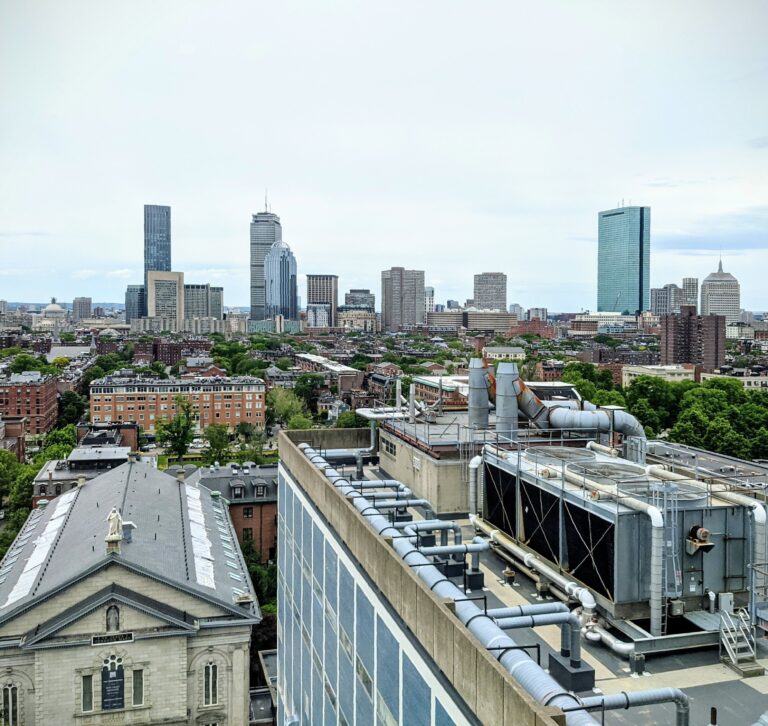Working in edtech: My first six months at a med school
A few weeks into starting my new role remotely, my manager told me that I should be all ramped up in my position in about six months. Back then I told myself I could probably get myself oriented in a few weeks, maybe three months max. Or so I thought. That sixth month arrived about a month ago.
Now half a year in, parts of my job and the routines corollary to it still feel new, because some of them are by virtue of moving to a new city: the office location, my commute, my workspace. Even my work arrangement is new – a combination of two days of remote work and three days in-person. Meanwhile, I’m still far from the expert my job title “Educational Technologist” suggests, and I thought I would become when I started. It’s not a terrible self-assessment. It keeps my eyes peeled for tech issues, processes, and solutions to learn and improve, big and small. So here I’m sharing some of them, observations I’ve collected over the last couple of months of working in edtech at a medical school.
A unique med school subculture
As a grouping of would-be and current medical professionals, the med school has its own norms, values, and forms socialization. From the white coat ceremony when students enter med school, to Match Day when they learn their destinations for their residency. This has led me to read a couple of articles by FW Hafferty on the hidden curriculum, ethics, and dynamics in medical education. I’m sure I’ll get to know more of these customs and traditions as I interact more with faculty, staff, and students.
Med schools start the school year early
Most college students start the academic year in late August or September. By then med students are two months into their school year. First year BU med students started their classes in the first week of August, with the first exam rolling in three weeks later. This means our academic calendar is dialed back earlier than the rest of the campus. As early as spring we start supporting faculty and course coordinators through responding to requests to copy courses in Blackboard, training them for any new tech, or training new faculty. By July, while other departments of the university were still ironing out their back-to-office strategies, we were already clocking in on campus.
Emphasis on standardized assessment
Part of my role as an Educational Technologist is teaching instructors exams are posted with the correct settings. And in doing so, I get to take a peek at their tests. I’ve observed that many of the items are multiple choice type of questions, possibly a holdover from the days of shading sheets of Scantron. We still keep a few copies at hand for one of those unfortunate tech fails. This is not to say that’s the only way med students are taught and learn. They also go on to do “Doctoring” and clerkships where they further develop other competencies outside the classroom and in a professional setting as they advance through the program. They also engage in team-based learning with their peers throughout the year or even longer.
Edtech can support inclusivity
Students who require time accommodation during remote-proctored exams maintain a sense of privacy. Because they take exams in their own private room, their status as accommodation students remains private and not under the scrutiny of other students, avoiding the stigma that may accompany finishing an exam later than the rest of the class.
Faculty’s varying levels of tech savviness
It’s easy to assume that all faculty need help with the many platforms we use. But some faculty, do have an affinity for tech. They can set up a team-based learning type of assessment on Examsoft, or just tell me how to allow other participants to share their screen on Zoom, a tool they’ve become experts of over the past year and a half. It’s good to remember that faculty have varying levels of tech know-how, we edtechs can’t be absolute experts of multiple tools, and that’s okay.
Expect the worst, hope for the best (of edtech platforms)
This applies not only to a med school, but higher ed and any organization that relies on technology more broadly. No matter how much we prepare or anticipate tech issues, I’ve learned to accept that no session will go smoothly technology-wise. New edge cases will always crop up: Blackboard assignments not showing up for one student or Examsoft getting stuck when uploading, There are also things that are just beyond my control, such as students not updating to the latest version of a software despite several reminders, or the new product license not carrying over to previous users. Inasmuch as educational platforms can inexplicably get a little buggy, its users can also be the reason for when a tech “is not working.
Be ready to pivot
Ok, this actually happened toward my seventh month at work. We were preparing for the first in-person big exam of first year med students. It’s a big deal not only for them, but also for us. We had to nudge everyone to install the testing software, take a tech test to check the compatibility of their laptops (for the nth time, no iPads allowed!), and download the exam. Closer to the big day, some students had to change their mode of assessment and take it remotely. This meant making sure we still had remote exam credits left, setting up the back end of the testing platform, and providing tech support to both in-person and remote exam takers. Despite our original plans already in place, we had to be agile to catch those last minute curveballs. Who would have thought hyflex learning also calls for hyflex edtech support?
Early this month, first year med students held their white coat ceremony, that rite of passage inducting them to the world of becoming a medical doctor. As I stood at the back waiting for the event to start, a mother approached me and as she eyed my ID, asked what course I taught, or if I had a child who was taking part in the ceremony (!). I explained I’m a staff, and that I work on educational technology. “No, I’m just here to observe,” I said with a smile. The next day, the students started their first class. Like them, I realized I’m in a similar position of starting out, of learning, though I did months earlier in the edtech field. I hope to keep this curiosity for the next months or years to come, or even years, beyond their tenure at the medical school.



